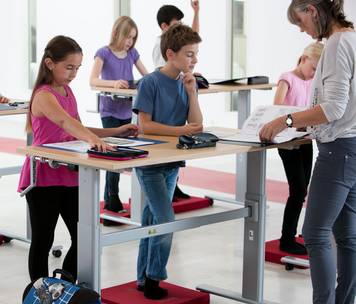Stressed schoolchildren, stressful schools
Dr Silke Schmitt Oggier, school medical officer and media representative for the Zurich school medical service:
As children grow older, school becomes a weightier matter, not just in terms of the performance expected of them but also due to parental expectations and the amount of time they need to study. An investigation from 2003 clearly shows that two thirds of Swiss schoolchildren enjoy going to school and are very keen to do well. When there is appropriate pressure on them to do so, they display great willingness to achieve. Doing well gives them confidence in themselves, which increases their wellbeing at school.
When schoolchildren are overtaxed, on the other hand, they display negative stress. They do not do as well and their physical wellbeing leaves a lot to be desired. Thus, those children with behavioural and health problems are largely those who are unable to keep up with requirements and disappoint their parents:
- A good 20% of 11–16-year-olds feel stressed by school
- Some 20% of apprentices state that they suffer considerably from four to six stress factors in the workplace
- 16–20-year-olds describing the atmosphere at school as positive are less likely to report feeling stressed at school






